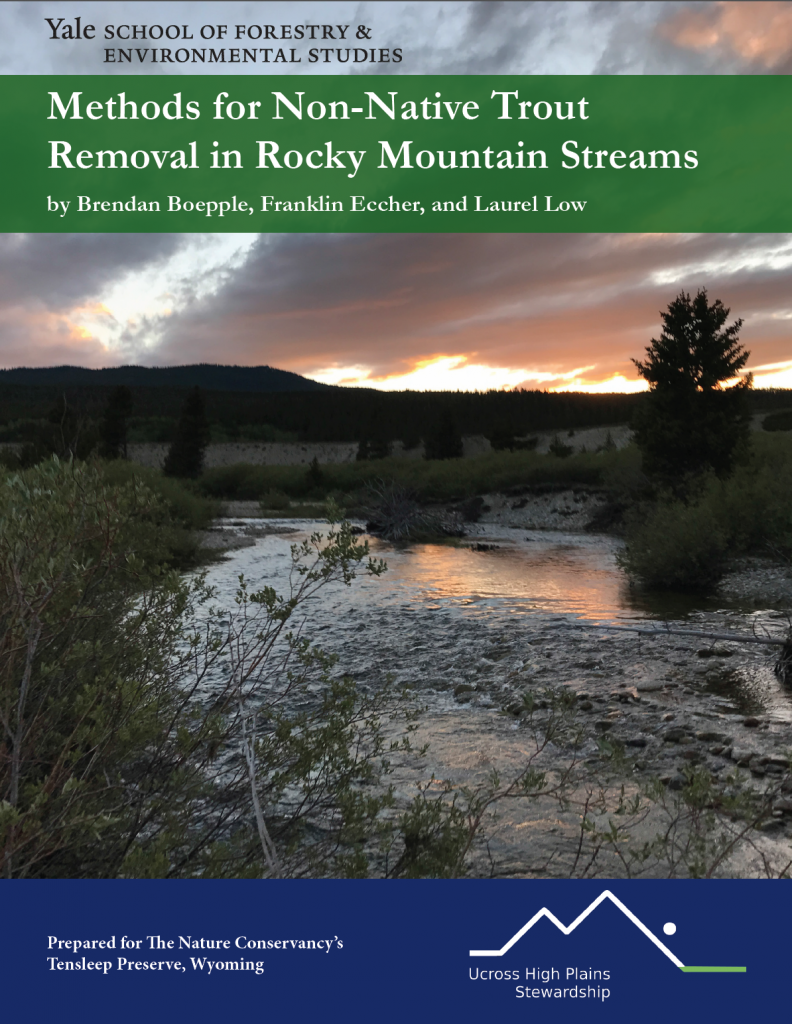The reintroduction of native trout in the Mountain West is a valuable conservation tool for fisheries managers with an interest in maintaining healthy populations of threatened trout species. At the same time, the choice to reintroduce native trout involves a complex decision-making process with numerous biological, ecological, and social considerations. This process is complex, namely, because the reintroduction of native trout necessitates the removal of non-native trout from the same stream. The eradication aspect of these kinds of reintroduction project creates a slew of difficult questions – about ensuring the continued ecological health of the stream, the biodiversity of macroinvertebrates and other species, and the fully effective eradication of the non-native trout.
The decision to pursue a trout conservation project requires research, planning, and the consideration of many interconnected steps – especially regarding the mechanism of non-native eradication. By the time a fisheries manager begins the serious consideration of a native reintroduction project, they should also be taking into consideration the complex system of the surrounding watershed, the stream characteristics on their particular project site, and a suite of other concerns that will ensure the viability of native trout into the future. Williams et al. (2006) outlined many of these considerations in their A Guide to Native Trout Restoration.
In light of the myriad concerns a fisheries manager may have in considering a native trout reintroduction project, our purpose in producing this management handbook is to synthesize these considerations into a practically applicable tool for fisheries managers. This handbook explores the significance of native trout conservation, the importance of non-native trout eradication, and the range of methods available to execute a successful eradication project.
This handbook focuses specifically on piscicides and electrofishing as tools for eradication, and provides a framework for deciding which methods best suit a particular stream environment. Rather than an instructional guide for non-native trout eradication, this handbook is a decision-making tool intended for use in the planning stages of the process.
The focus of this project arose specifically from the interest of The Nature Conservancy’s Tensleep Preserve in northeastern Wyoming in exploring the reintroduction of native trout in Canyon Creek. For that reason, the Nature Conservancy’s project and its specifics bounded the research and data collected and have guided some of the considerations related to our proposed management suggestions. The Nature Conservancy at Tensleep, just as any fisheries manager with similar considerations on their specific project site, is interested in native trout reintroduction in an exploratory way. This particular stretch of Canyon Creek on the Tensleep Preserve is a complex riparian ecosystem, and presents its own unique challenges. However, we intend for the content presented here to find wide applicability to other native trout reintroduction projects across the Mountain West and beyond.
Read the full report below by clicking on the image:

